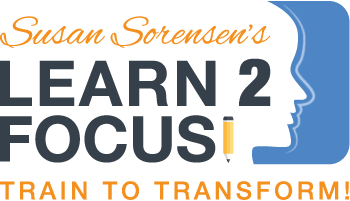Your Right-Brain, Your Left-Brain, and Your Dyslexia
/Do you struggle with dyslexia?
Why can’t you will your way through it?
Why are reading and writing such a challenge when other tasks come easily?
To understand what’s really going on, you need to understand your brain.
Specifically how the right-brain and the left-brain work.
Then, you need to know how your brain has been impacted by dyslexia.
The Right Brain.
The right hemisphere of the brain works concretely. In whole pictures.
Sight, sound, and movement are this area of the brain’s foundations for learning.
Right brain skills include:
- Learning through concrete visual aids.
- Global or multidimensional thinking.
- Giftedness in the arts or athleticism and strong ability with mechanical tasks.
Here, processing information is not a result of breaking it into pieces.
As it pertains to reading, dissecting whole words into smaller units of sound or groups of letters, called phonemes or syllables, is not easily accomplished.
Attempting to pick apart a whole word for phonetic sound is confusing to this hemisphere. Sounds, apart from the whole word picture, have no meaning.
They don’t “stick” with that part of the brain and aren’t processed or stored in the long-term memory.
If the right brain is to accurately retain the sounds and letters, the whole word has to be pictured and memorized in order to fully grasp and relay what the letters and sounds represent. This puts the right brain at a disadvantage when new, unfamiliar words are introduced verbally and no concrete image yet exists.
The Left Brain.
The left hemisphere of the brain is linear, structural, and sequential.
Like a computer, it breaks information down and relays it in letters, words, and numbers. Breaking things down this way allows for accurate discernment of cause and effect as well, which impact prioritization, organization, and time management.
Left-brain skills include:
- Working well with the parts of a whole including various individual concepts and abstractions.
- Phonics and sequencing of numbers, letters, and words comes easily.
- Positive response to verbal and written language.
The left hemisphere contains three important functions that facilitate language competency.
At the front of the left-brain is the area used for breaking words apart into simple phonemes or letters and for sounding words out.
Located in the back, is where analysis of words takes place, drawing connections between syllables and phonemes.
There too, is the ability to instantly recognize words without having to sound them out.
These parts work in concert to encourage fluid reading and writing.
Dyslexic Brain Differences
Dyslexia could definitely be referred to as extremely right-brained thinking. Unfortunately, thinking in “whole pictures” doesn’t serve you in most learning environments.
Being heavily right-brained, a dyslexic person struggles in the following ways:
- To analyze words and recognize word forms for easy comprehension. Dyslexic people attempt to compensate for left-brain deficiencies with the right brain ability to glean visual cues for sounding out words.
- To transfer information from the right to left-brain. You can take in information and store what fits in whole pictures, but processing of the abstractions does not occur. Therefore, only memorization takes place, not deeper thinking or learning to manage abstract concepts.
- To deal with logical order and organization. Multi-step instructions, sequencing, and the analytical skills necessary for spelling, reading, writing, and mathematical equations are difficult when the right brain only recognizes an entire picture.
People with dyslexia naturally need the entire picture to complete tasks and fill gaps in their understanding.
Research-based brain training programs, such as Fast ForWord, provide the potential means for overcoming dyslexic reading, language, and cognitive challenges.
Both sides of your brain can be taught to work better together.
Your dyslexia needn’t have the final word.

